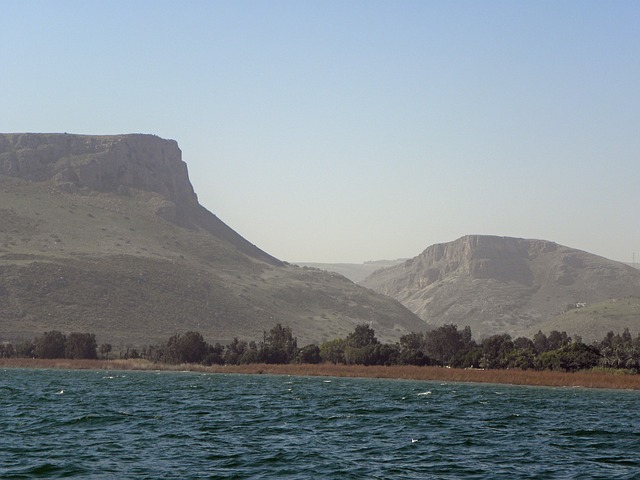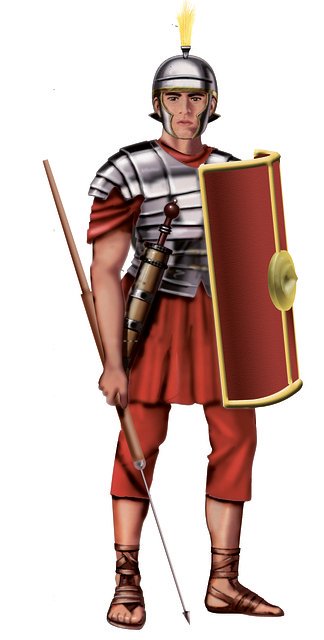By Tim Lambert
New Testament Society
In 63 BC the Roman general Pompey captured Jerusalem. From that time the Romans ruled Israel. It was divided into three parts, Galilee in the north, Samaria in the middle, and Judea in the south. The Jews had to pay taxes to Rome, which they resented. Jewish tax collectors who worked for the Romans were hated.
In the 3rd century BC, a sect grew up in Israel called the Pharisees. They were purists and regarded themselves as separated from all pagan influences. They were rigid upholders of the Jewish law. Unfortunately, they often upheld the letter of the law but forgot its spirit. The Pharisees were held in great esteem in Israel but Jesus accused them of doing good works just to impress other people. They were, naturally, offended by Jesus’ teachings and eventually sought to kill him.
Another sect was called the Sadducees. They were usually upper-class Jews. The Sadducees did not believe in an afterlife. They also did not believe in angels and demons. (The Pharisees believed in them all). Furthermore, the Sadducees only accepted the first 5 books of the Old Testament (Genesis, Exodus, Numbers, Deuteronomy, and Leviticus). They did not accept the other Old Testament prophets.
The poorest people in society were often widows because there were so few jobs for women. Unless a widow had a son to support her she was likely to be destitute. On the other hand, riches were believed to be a blessing from God. So if you were rich it was a sign of God’s favor. Jesus said it was difficult for the rich to enter the Kingdom of Heaven. His words must have astonished his disciples.
New Testament Houses
At the time of Jesus people lived in houses made of stone or mud bricks. The poorest people lived in houses with just one room. The room was divided into two parts. The half nearest the door had a floor of beaten earth. In winter domestic animals lived there. The family lived on a raised platform in the other half of the room. People who were slightly better off sometimes had an upper room.
The roof was also important. The family dried fruit and grains on the roof of their house and if the weather was very hot they slept there. At that time it was the custom to wash the dust from a person’s feet when they entered a home.
Poor people in Israel had very little furniture. Beds were usually just mattresses full of wool or straw, which were laid out on the raised platform at night. The whole family slept on the mattress under goat’s hair blankets. Poor people sat on stools. (Chairs were a luxury). Even tables were expensive and poor families often made do with a straw mat laid out on the floor.
However rich people had comfortable furniture including proper beds made of wood with fine wool blankets and pillows. In Israel, houses were lit by oil lamps. People burned dried grass or thorn bushes or dried animal dung on their fires.
New Testament Clothes
Men wore loincloths. On top they wore tunics. Women wore long tunics (often embroidered), which stretched to their ankles. In cold weather, people wore thick wool cloaks. Both sexes wore leather sandals. Clothes were made of linen or wool or sometimes camel hair. The mirrors mentioned in the New Testament were only polished metal. They don’t give a good reflection which is why Paul said ‘now we see a poor reflection as in a mirror. (The glass mirror we have today was invented in the Middle Ages).
New Testament Food
At the time of Jesus bread was the main food of ordinary people. (So much so that Jesus taught his disciples to pray ‘Give us today our daily bread’). Meat was a luxury and only the rich could afford to eat it often. Fine bread made from wheat was expensive. The poor often ate coarse bread made from barley. Grain was ground to flour by women using millstones. The Israelites were forbidden to eat pork but they did eat beef, goat, and mutton.
For vegetables, they grew beans, cucumbers, garlic, leeks, onions, and lentils. They also ate fruit such as figs, pomegranates, and grapes as well as nuts like almonds and pistachio nuts. The Jews also ate cheese and eggs.
Fish were also an important part of their diet. (There was a thriving fishing industry on the Sea of Galilee). Herbs were used to season food and honey was used to sweeten it. Olives were also important. They were eaten fresh or pickled. They were also crushed to make olive oil. In Israel, everybody drank wine. People obtained water from wells.

Work in the New Testament
Most people in Israel lived by farming. Every year their lives were governed by the same cycle. In autumn they picked olives. In October and November ‘early rain’ fell after the long dry summer. From November to January, the land was plowed and crops of flax (for linen), wheat, and barley were sown. From January to March people planted vegetables. The later rains came in March and April. At that time the people harvested flax.
In May and June, they harvested barley and wheat. During June, July, and August they pruned vines. Grapes were harvested in August and September. So were pomegranates and figs.
Meanwhile, shepherds looked after sheep and goats (the two were kept together). Both sheep and goats provided milk. Sheep provided wool and goat’s hair was used to make coarse cloth. Goat skins were used to make containers for milk, water, and wine. Farmers also kept oxen and asses. Both were used for pulling plows.
Although there were no factories in Israel there were many industries. Most craftsmen worked in their own homes. Craftsmen included potters, blacksmiths, bronze smiths, goldsmiths, and silversmiths. There were also many stonemasons and carpenters.
In the New Testament era when boys were quite young, they were sent to be taught by the Rabbi in the synagogue. Boys learned their father’s trade. Girls were taught at home. Girls learned skills like spinning, weaving, and baking from their mothers. Some girls learned to read and write at home.
When a child was born after 40 days the law said the mother must go to the temple and make a sacrifice. It could be a lamb and a pigeon or a dove. However poor people were allowed to sacrifice two pigeons or two doves instead.
Almost everybody in Israel got married. There was no word in their language meaning bachelor. Weddings lasted up to a week. At a wedding, musicians played harps, tambourines, and pipes.
When a person died the body was washed and wrapped in linen. Sometimes myrrh and aloes were placed between the folds of linen. Aloes are the bitter juice of the aloe plant while myrrh is gum from the bark of a tree. Jesus was buried in a tomb carved out of rock sealed by a round stone.
New Testament Transport
The Romans are also famous for the network of roads they built across the Empire. In Israel, ordinary people went on foot or traveled by donkey or ass. Horses were expensive and only the rich could afford them. By law, a Roman soldier could force anybody to carry his equipment for 1 mile. In Matthew 5:41 Jesus told his followers ‘If somebody forces you to go 1 mile go 2 miles with him’.
In the New Testament Paul made many voyages. Roman ships had a single main mast, which carried a rectangular sail, although some ships also had small sails at the bow and stern. Roman ships did not have rudders. Instead, they were steered by oars. The Romans also built lighthouses to aid shipping.
Roman Soldiers
In the first century, a Roman soldier wore segmented armor (lorica segmentata). He threw a spear called a pilum and fought with a short sword called a gladius. A curved rectangular shield protected him. There were also auxiliary soldiers, both infantry and cavalry. When they finished their service (after 25 years) they became Roman citizens. A centurion was in charge of 100 soldiers.

Animals and Plants
In Israel, wolves preyed on sheep. Furthermore, foxes also lived in Israel. They liked eating fruit and sometimes damaged vines. In desert regions, snakes and scorpions were a danger.
Many fruit trees grew in Israel, including almonds, pomegranate, and fig trees. There were also date palms. Oak trees were common in Israel. So were poplars and pine and fir trees growing in the mountains. Acacia trees grew in the desert. Nevertheless, Israel was not densely wooded. There were also many wildflowers in Israel. Unfortunately, there were also thorns and thistles.
Medicine in the New Testament
At the time of Jesus ‘leprosy’ was used to describe many skin diseases. Lepers had to live apart from everybody else. They had to wear torn clothes and shout ‘unclean, unclean!’ to warn people to keep away.
Luke, a disciple of Jesus was a doctor. In his day most doctors believed the Greek idea that the body was made up of four humours or liquids. They were phlegm, blood, yellow bile, and black bile. If a person had too much of one humour they fell ill. For instance, if a person had a fever he must have too much blood. The treatment was to cut the patient and let him bleed.
Last revised 2024